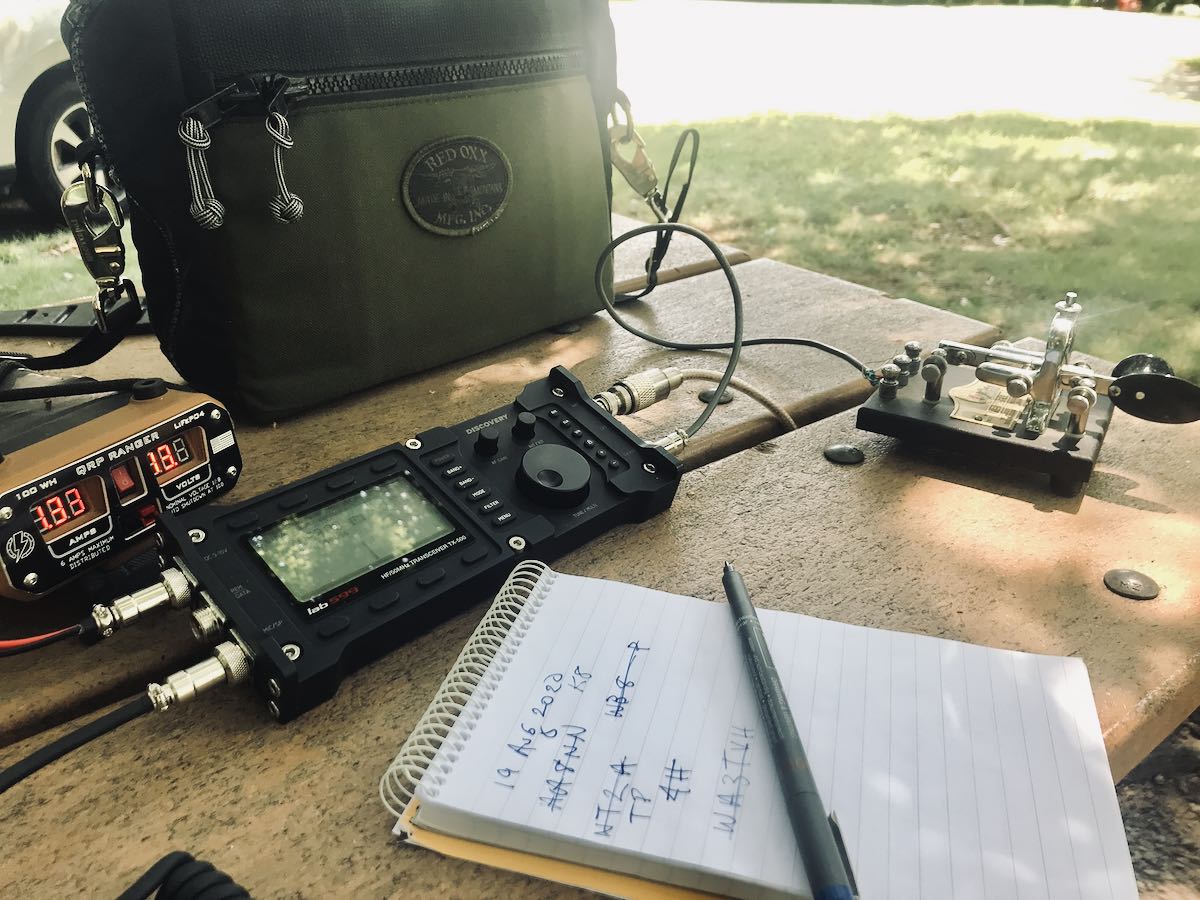 Yesterday, I took delivery of a lab599 TX-500 Discovery QRP transceiver. Many thanks to Josh at Ham Radio Crash Course for shipping it here and Ham Radio Outlet for trusting me with this fine machine for the next couple of weeks.
Yesterday, I took delivery of a lab599 TX-500 Discovery QRP transceiver. Many thanks to Josh at Ham Radio Crash Course for shipping it here and Ham Radio Outlet for trusting me with this fine machine for the next couple of weeks.
I’ve been looking forward to this day for months–indeed, nearly a year.
A few initial impressions…
I won’t lie: the TX-500 is a gorgeous little transceiver and it’s solid.
The form factor is even a little smaller and lighter weight than I had imagined. I thought the multi-pin connectors on the side panels were the same size as, say, an XLR connector. Turns out, they’re much smaller and quite easy to use.
To put the TX-500 on the air, you’ll need to connect a minimum of three things: the power cable (terminated with Anderson Power Poles on the battery side), an antenna (BNC), and the speaker microphone. The TX-500 has no built-in speaker.
That’s all you’ll need if operating SSB. If operating CW, of course you’ll need to connect your key, but you’ll still need the speaker/mic connected for audio. That does make for quite a few things connected to the radio all at once.
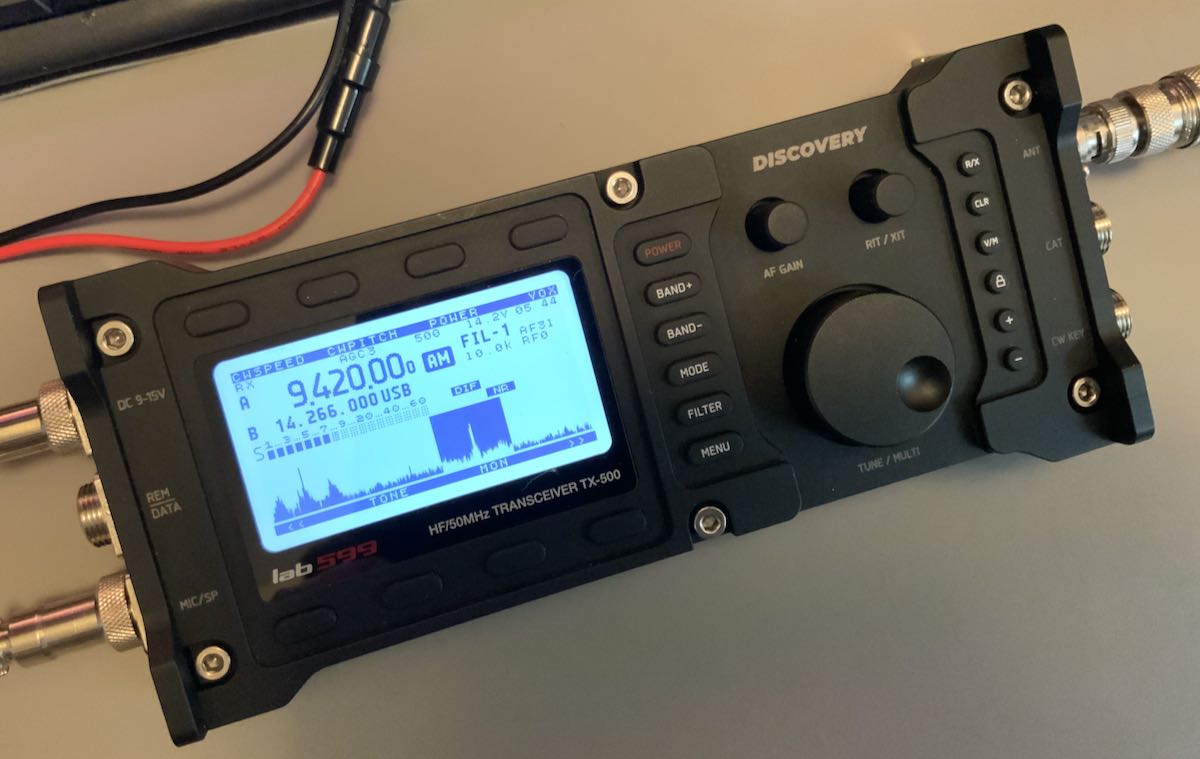
The backlit display is high-contrast and easy to read indoors and in full sunlight. (And yes, that’s the Voice of Greece!)
In the spirit of full disclosure, I am not a fan of speaker microphone combos, but I’ll readily admit that the one with the TX-500 is about as good as they come. It feels durable and produces serious volume. The audio fidelity is obviously built around voice and CW, so it’s not ideal for HF broadcast listening, although it does have an external mono speaker port on the side of the mic.
If I owned this TX-500, I would order another speaker/mic 6 pin connector and build a headphone cable for broadcast listening and CW use. An easy fix.
For SSB though? The provided speaker/mic works. Indeed, it works quite well in the field because it’s so easy to hear.
There’s so much more to this radio, but I’ll save that for future posts and my full review. Let’s talk code…
Attaching a key
This morning, the first thing I did was fire up my soldering iron and make a CW paddle cable. (I hope HRO doesn’t mind–I didn’t exactly think to ask. Come to think of it, let’s just keep this between us, ok?). 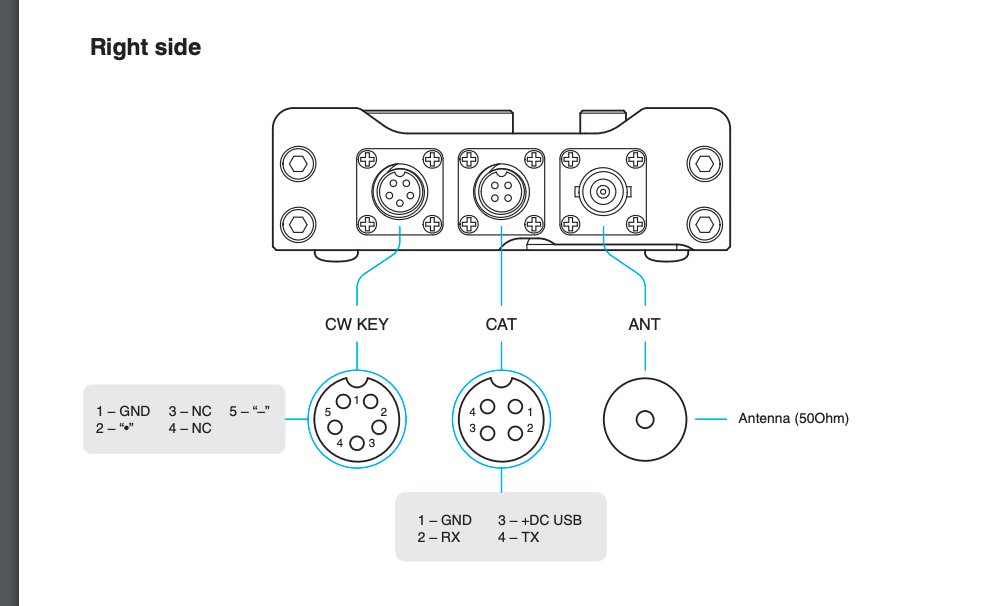 I soldered three wires to the supplied 5 pin connector (pins 1, 2, and 5).
I soldered three wires to the supplied 5 pin connector (pins 1, 2, and 5).
To keep things simple, I hooked the TX-500 up to my Vibroplex single lever paddle which sports three terminals, making it easy to connect to the CW cable pigtail. Plus, heck, any excuse to play with the Vibroplex, right!?
CW
I was so eager to see how the TX-500 would perform on CW, that immediately after hooking up the key the first time, I checked POTA spots and worked two stations (WR8F in Ohio and NG5E in Texas) in rapid succession. Here’s a video of the exchange with NG5E:
Note that I used my iPad to make this video and, for some reason, the mic accentuated the clicking/clacking of my Vibroplex key. It’s not normally that pronounced. 🙂
CW memory keying
One of my complaints about the TX-500 when I read the final feature list a couple weeks ago was that it lacked CW memory keying. To me, this was a major negative because many POTA and SOTA activators rely on CW keyer memories to help with their logging workflow in the field. I certainly do.
lab599 must have been listening because I found out last week that they implemented CW memory keying in the most recent beta firmware update. Woo hoo!
I was sent the firmware file and this morning had no issues installing it in the TX-500 with the firmware application/tool.
After I sorted out how to record and play back the CW memories using the top row of function buttons, I was ready to hit the field!
I packed the TX-500, and headed to the Blue Ridge Parkway for a POTA activation!
CW POTA activation
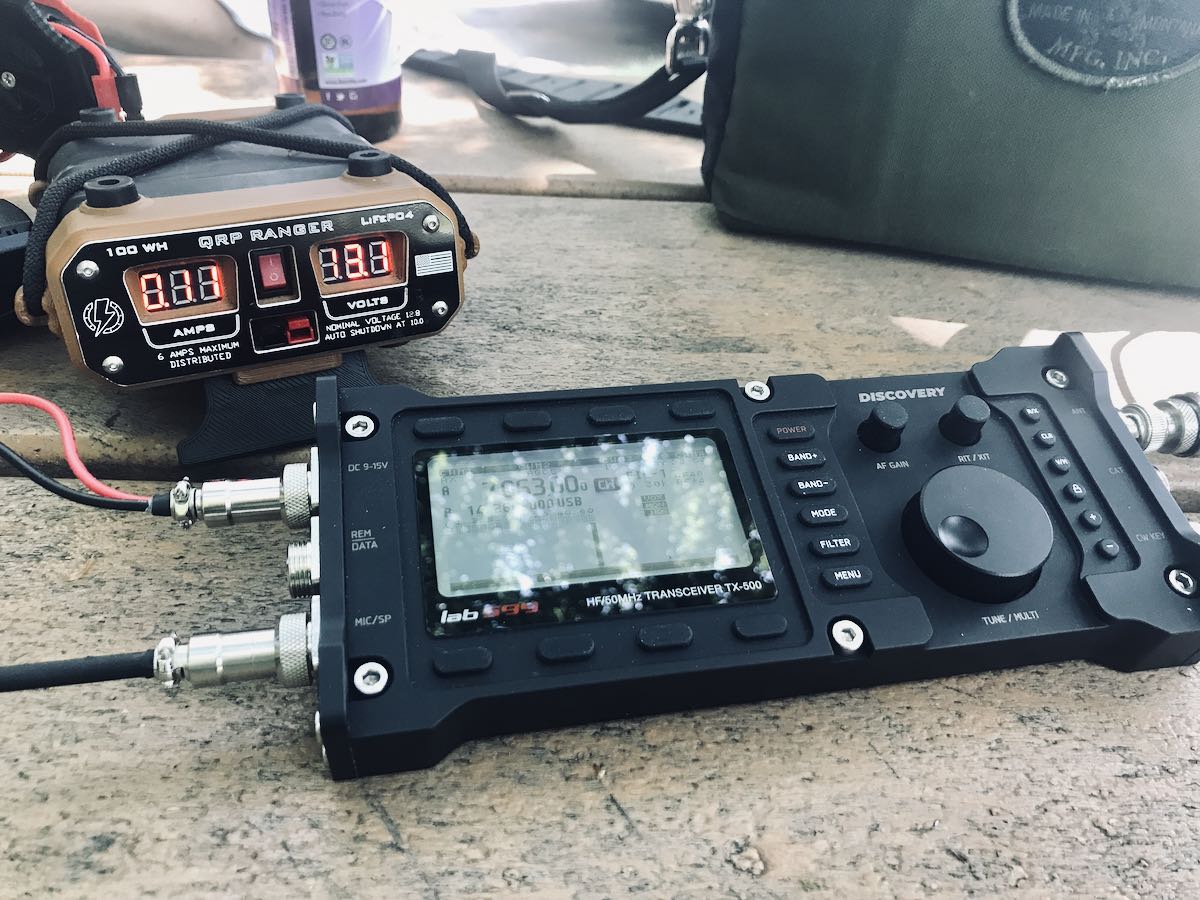 I only had a brief period of time to fit in an activation today, so I kept it simple by going to the Folk Art Center which has a number of picnic tables. A park ranger once asked that I not hang an antenna in a tree at this particular site, so I used my Wolf River Coils TIA portable vertical antenna.
I only had a brief period of time to fit in an activation today, so I kept it simple by going to the Folk Art Center which has a number of picnic tables. A park ranger once asked that I not hang an antenna in a tree at this particular site, so I used my Wolf River Coils TIA portable vertical antenna.
Truth is, I feel like I always get more mileage out of a wire antenna than a vertical when running QRP, but I worked with what I had.
I started calling CQ on 7063 kHz and within 10 minutes worked five stations.
The CW memory keyer worked well. There is currently a two second delay before the TX-500 begins transmitting, but I’m guessing that can be fixed in a future firmware update.
Here’s a short video of the TX-500 memory keyer in action:
The TX-500 uses a relay to switch between transmit and receive, so you can hear clicking in the background. I had the recovery time set to the shortest interval which resulted in the maximum amount of clicking. Good news is the TX-500 body is so solid, the clicking is quite soft and muted–about the softest clicking I’ve ever heard in a transceiver. You could, of course, minimize relay clicks by setting the T/R delay to a higher number.
I’m very impressed with the TX-500’s low noise floor and filtering. Signals just seem to pop out of this thing.
I played radio for a while longer but was eventually chased off by a thunderstorm.
I must admit: for the first time, I wasn’t terribly worried if it started raining and the radio got a bit wet. The TX-500 is weather-resistant so can certainly cope with a sprinkle.
More to come!
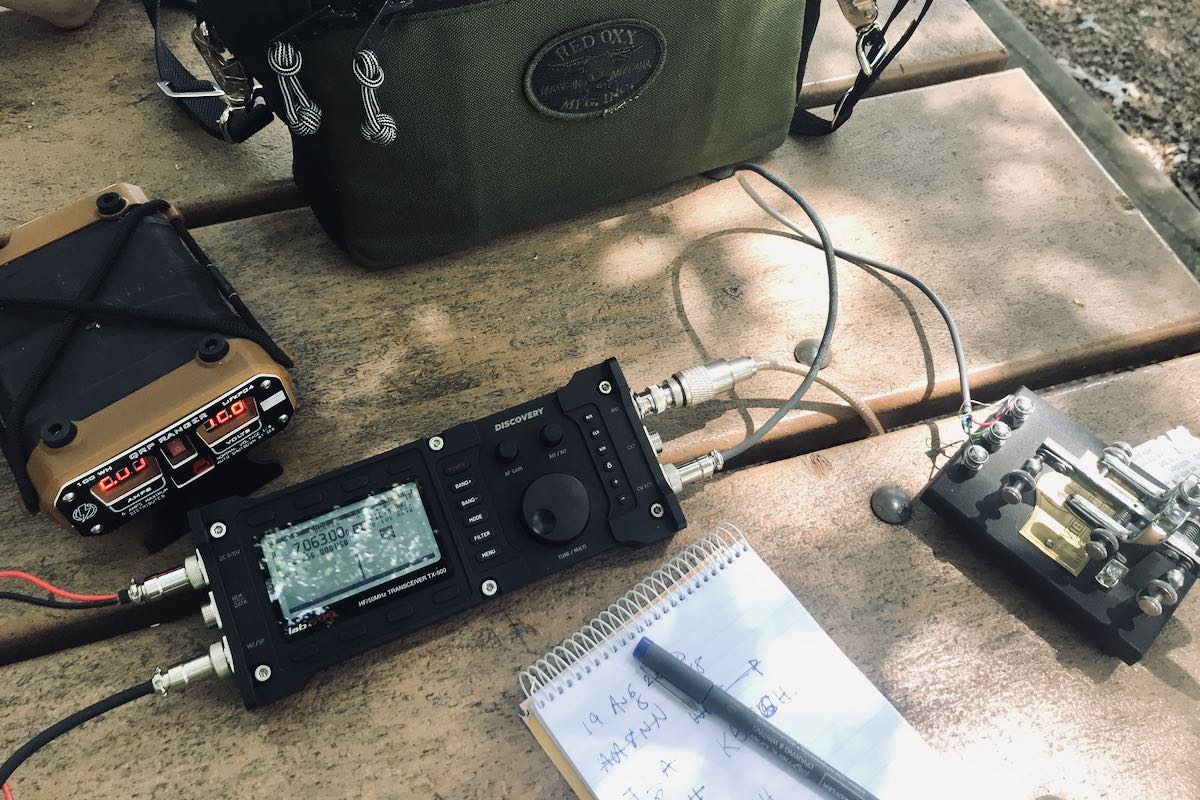 I’ve set a personal goal to take the TX-500 to the field seven days in a row. I’m not entirely sure that’s realistic as I see the amount of thunderstorm activity in the forecast. Still, one must have goals, right? Plus, any excuse to hit the field and play radio!
I’ve set a personal goal to take the TX-500 to the field seven days in a row. I’m not entirely sure that’s realistic as I see the amount of thunderstorm activity in the forecast. Still, one must have goals, right? Plus, any excuse to hit the field and play radio!
Please comment if you have questions about the TX-500. I’ll do my best to answer as many as I can!
Do you enjoy the SWLing Post?
Please consider supporting us via Patreon or our Coffee Fund!
Your support makes articles like this one possible. Thank you!

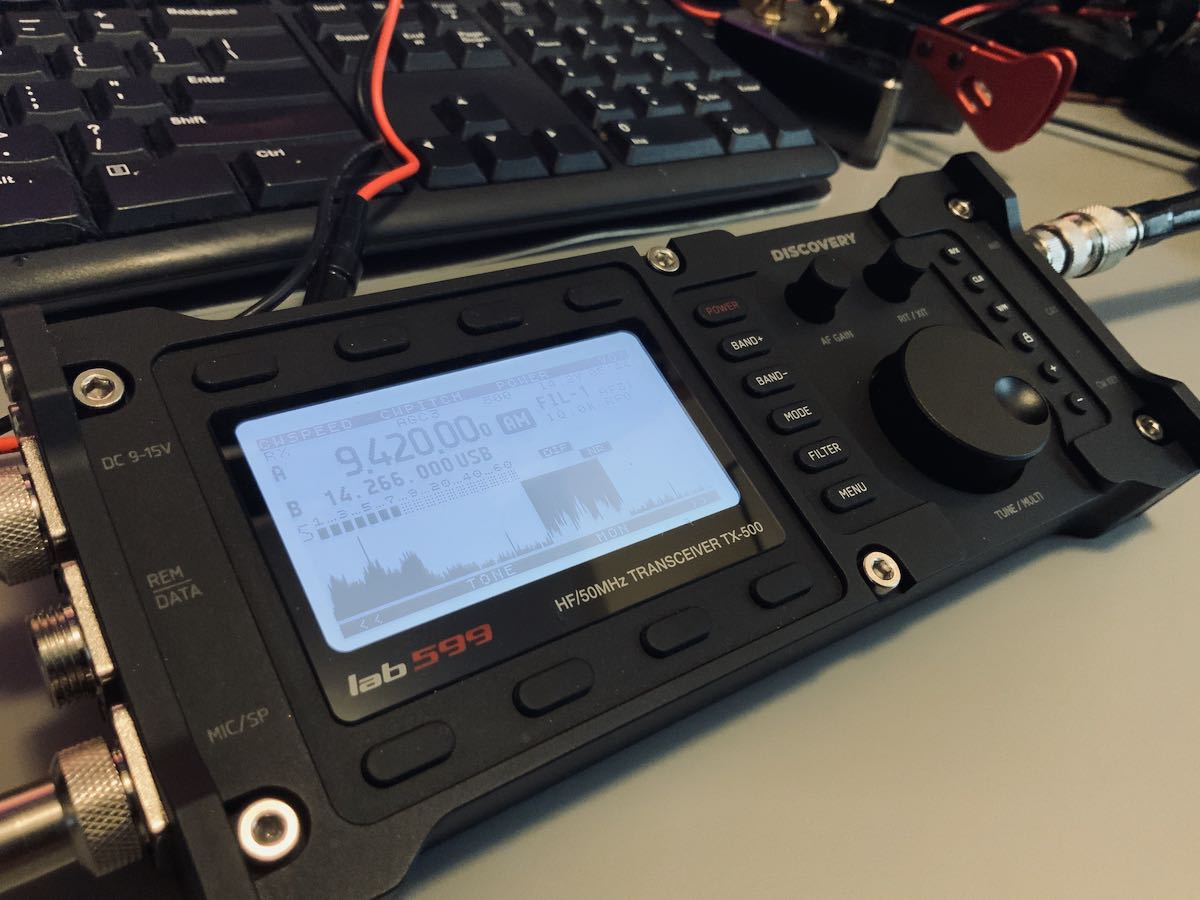
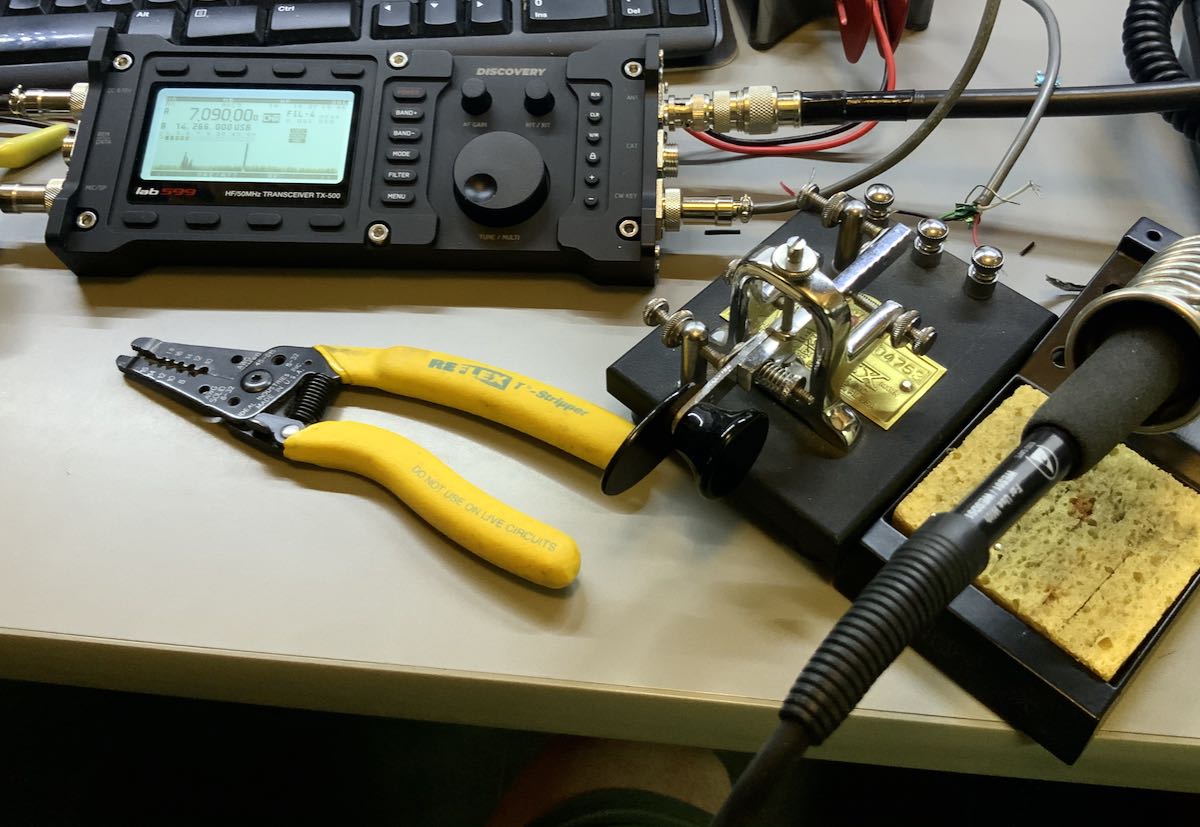
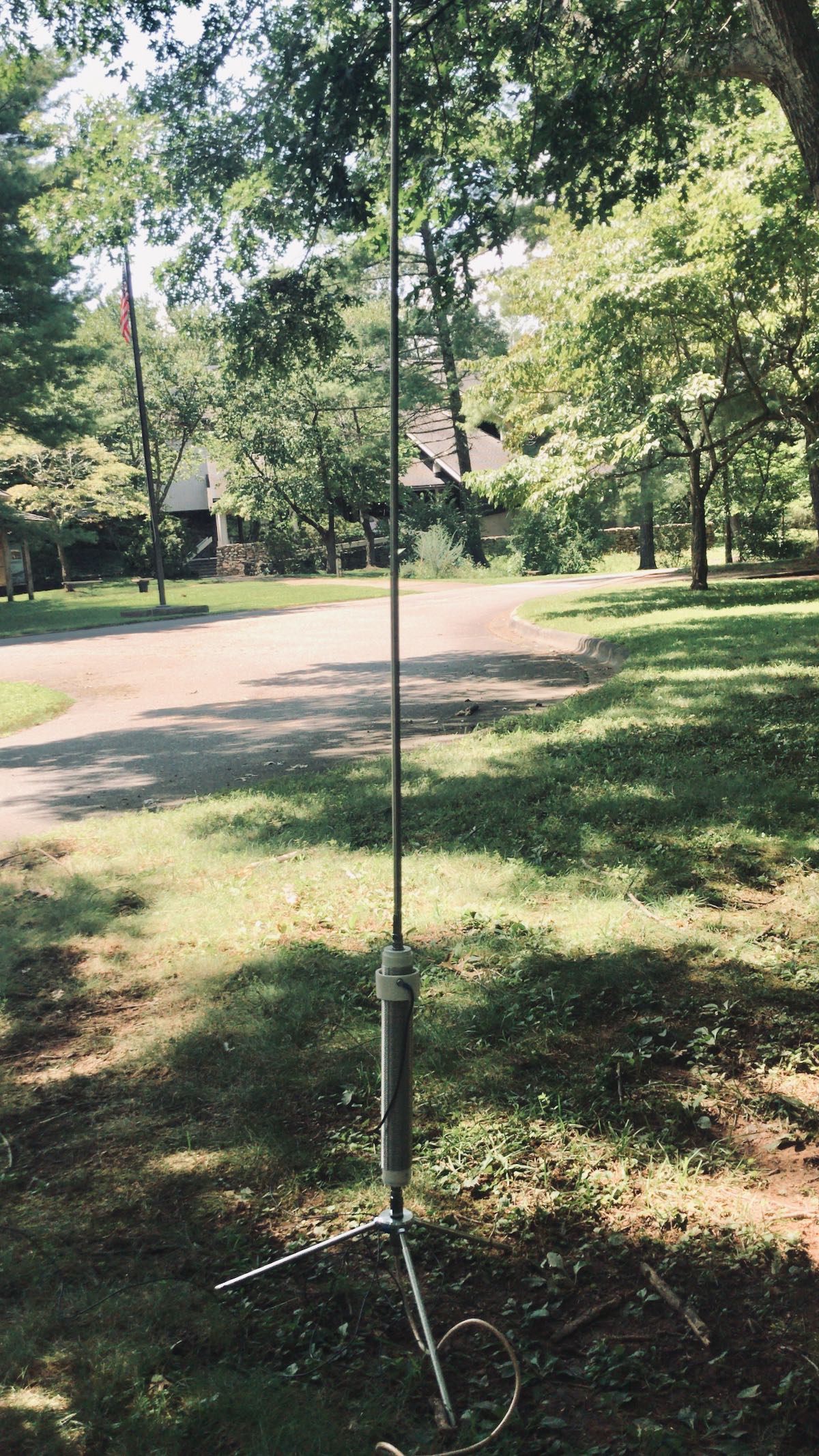

Hello Thomas
Well I have received my TX500 and had it about a week.
I had an 80 meter contact over 300 miles on flat country. I had my Two turn
Mag loop in my shack under a metal roof and had both a CW and phone contact. My friend Max VK6FN was using a tuned 160 meter Dipole and was readable 5 copy but I did fade as it was 2:30 in the afternoon. I was on battery
At about 11 volts and had no trouble putting out 8 watts with VERY good strong audio reports.
I am waiting on a firmware upgrade as pushing a sequence of buttons causes it to lock up also the XIT/RIT is not working.
That said I am still very happy with the TX500 and feel sure these minor issues will be resolved.
73 John
VK6TY
Excellent, John! Share your photos and thoughts as you put the TX-500 on the air.
I’m *really* missing not having one in the shack, so will likely plop down the cash for one later this year or early next year.
Cheers,
Thomas
K4SWL
Is there PTT input and output control for the external amplifier? Pity that TX/RX is done with the relay. Hope the manufacturer will reconsider and make it silent. Is there temperature control with readout on the screen? What is the output power for 100% duty cycle? KX3 for instance is requiring 3rd party heat sink to bear with digi modes. Since there is no antenna tuner, it would be interesting to know at what SWR the radio starts to drop down output power?
What is your opinion of the QRP Ranger battery supply? I have looked at it for quite some time and see it is now available again.
I like it. I bought one in the very early days of it being offered. The first one I got actually had an issue charging properly. I sent it back and it was replaced out immediately. I’ve had no issues at all with this one. I *think* I’ve had it well over 4 years now. I’m guessing Bill at Hardened Power Systems has even made it better since. You certainly get more “bang for buck” by making your own portable pack, but it is awfully nice having a robust battery pack with voltage and amp readings on the front. Especially if you review and evaluate radios! 🙂
How is the AM fileter on shortwave? I listen to a lot of WWV and Monticello, Maine
I plan to play with the TX-500 on shortwave today. I need an external speaker to really check it out. it outputs mono, so headphones only produce one ear of audio.
Will it tune down to 470 kc for Whisper, is the BC band sensitive ?
Many thanks
John
When the first notices for this rig came out, it looked like the cost would be $1200 to $1300 with no tuner, no internal battery and no speaker. For the same price, the KX3 offers much more. With an $800 price point, even with the additions, it seems like this rig is a real alternative. The question then becomes support. Elecraft is fantastic. Never heard of lab599. And no real info on previous rigs from them is available. Guess I’ll wait until there’s a lot more info available. My KX3 is a keeper.
lab599 is a new company. I do know for a fact that there will be a US-based service center for repairs (warranty and non-warranty) in Nevada.
Elecraft rigs are hard to beat! I’ve two of them! 🙂
Thanks for reviewing this interesting transceiver!
What is the maximum output power when applying e.g. only 10V?
I’ll have to check that Stephan!
If you have still the TX-500 on hand – please measure the outer thread of the connectors on the rig.
Are they 12mm (type GX12) or smaller in diameter?
73’s de OE1MWW
Wolfgang
Hi, Wolfgang,
I’ll try to take this by a friend’s QTH to measure. This might be a good question for lab599, however.
73,
Thomas
Relay switching, sigh. Not the rig of the dreams of this CW operator. Full QSK or no way for me.
Unless I missed it, you made no mention of an internal tuner. I went to their home page and found no mention. Did you connect an external tuner or did you use a resonant antenna on each band?
https://lab599.com/
That’s correct, Tim: there is no internal tuner. I doubt there will ever be, however, I do believe lab599 is making an attachable battery pack.
Yesterday, I paired the TX-500 to my Wolf River Coils TIA which I can adjust to be resonant on 40, 30, and 20. Normally, I only use resonant antennas in the field–my favorite being the EFT Trail-Friendly (40/20/10).
Cheers,
Thomas
There are a few very small tuners that could be used externally with this rig. One’s the Elecraft, but here’s a new company (at least I’d never heard of it before): http://www.mat-tuner.com/en/ . They have a new model out for the IC705 [mAT-705] but it’s not on their web site yet. They may repackage it to suit the TX-500. Worth checking/suggesting! I can see why they have made one for the 705 – sales are rumoured to be massive even pre-delivery.
One concern is that the layout of the connectors on the TX-500 doesn’t make a ‘snap-on’ tuner or amp too easy. It might have been better if the antenna, data and power connector were next to each other. Can’t have everything unless designed-in integration is included from the board layout up!
muy buen review lo unico que me hace algo de ruido es que es muy costoso, pero esperaba buenos resultados del mismo.-
Nice write up, Thomas! Looking forward to more on this interesting rig.
73,
Randy, KS4L
Will the 599 tune below 500KC eg 470KC for whisper and is the BC band sensitive .
Many thanks for your review thus far.
73
Lee
VK6TY
Hi, Lee,
No–the TX-500 tunes continuously between 500 kHz and 55,990 kHz. Not below 500 kHz.
Cheers,
Thomas
Many thanks Thomas.
I look forward to receiving mine I ordered it about 2 weeks ago.
Thank you for your reviews. They are great and very helpful.
Cheers
Lee